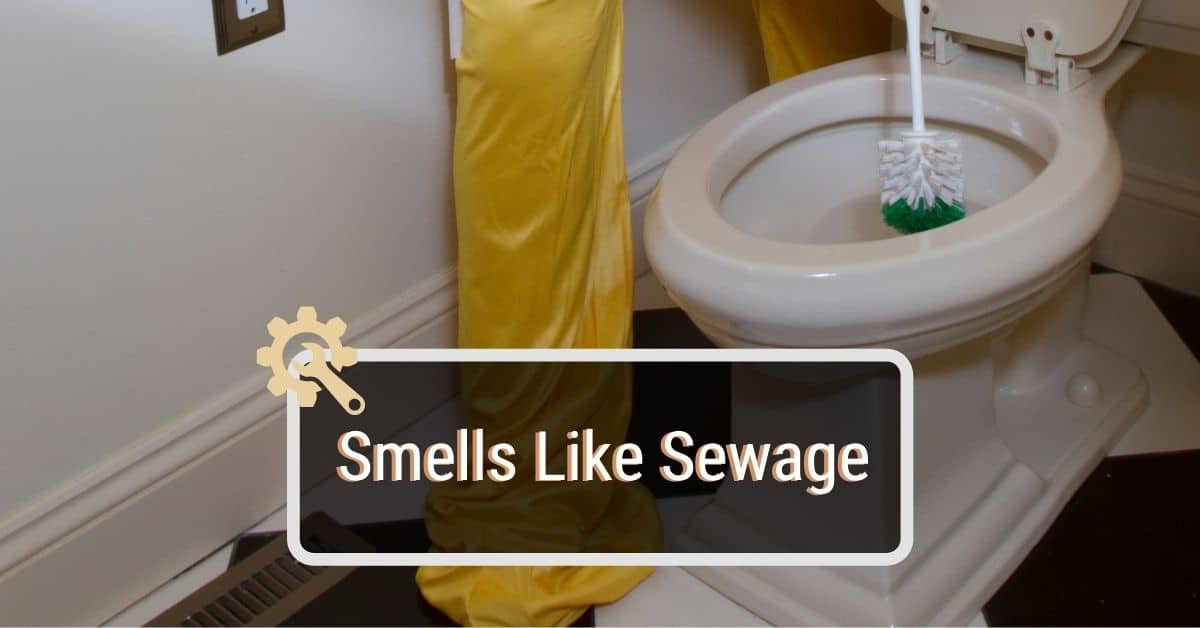Causes of Sewer Smell in Bathroom Sink

Sewer smell in bathroom sink – Unpleasant odors emanating from bathroom sinks can stem from various underlying issues. These issues can range from simple blockages to more complex problems requiring professional attention.
If the noxious sewer smell in your bathroom sink persists, it may be wise to examine the corner bathroom sink cabinet for potential leaks or damage. Neglecting such issues can exacerbate the foul odor, making your bathroom an unpleasant space.
Inspect the cabinet thoroughly, paying attention to any visible cracks or loose fittings, to ensure the integrity of your bathroom’s plumbing system.
Blocked Drainpipes
Clogged drainpipes are a common culprit behind sewer smells in bathroom sinks. Hair, soap scum, and other debris can accumulate over time, forming a barrier that prevents water from draining properly. This stagnant water creates a breeding ground for bacteria and mold, which release foul odors.
The acrid smell of sewage wafting from your bathroom sink can be a persistent nuisance. While larger sinks may provide more space for water to flow freely, consider installing a small wall mount bathroom sink to minimize the risk of clogging.
Its compact design ensures efficient drainage, reducing the likelihood of stagnant water and unpleasant odors.
Faulty P-traps
P-traps are U-shaped pipes located beneath the sink that serve as a barrier against sewer gases. If the P-trap becomes damaged or misaligned, it may allow sewer gases to escape into the bathroom.
Dry U-bends
U-bends, similar to P-traps, are curved sections of pipe that hold water to prevent sewer gases from entering the home. However, if the U-bend becomes dry due to infrequent use or evaporation, it can no longer effectively block sewer odors.
Bacteria and Mold Growth
The moist environment of bathroom sinks provides an ideal breeding ground for bacteria and mold. These microorganisms decompose organic matter, releasing foul-smelling gases as a byproduct.
Troubleshooting and Prevention

To prevent and address sewer smells in bathroom sinks, several measures can be taken. Regular maintenance and proper usage of bathroom fixtures are crucial. Here are some effective troubleshooting and preventive techniques:
Unclogging Drains
Clogged drains can cause water to back up, leading to sewer gas buildup. To unclog drains effectively, consider the following methods:
- Baking Soda and Vinegar: Pour 1/2 cup of baking soda down the drain, followed by 1/2 cup of white vinegar. Allow the mixture to fizz and bubble for 15-20 minutes. Flush with hot water.
- Drain Snake: Insert a drain snake into the drain and rotate it to break up clogs. Pull out the snake and flush the drain with hot water.
Inspecting and Replacing P-Traps
P-traps are U-shaped pipes located under the sink that prevent sewer gases from escaping into the bathroom. To ensure proper water flow and prevent sewer smells, inspect and replace P-traps as needed:
- Inspection: Check the P-trap for any leaks, cracks, or blockages. Tighten any loose connections or replace the P-trap if necessary.
- Replacement: Disconnect the old P-trap and install a new one, ensuring it is properly aligned and connected.
Preventing Dry U-Bends
Dry U-bends occur when water evaporates from the P-trap, allowing sewer gases to escape. To prevent this, implement the following measures:
- Regular Water Flow: Run water through the sink regularly, even if it’s just a trickle, to maintain water in the P-trap.
- Mineral Oil: Pour a small amount of mineral oil into the drain to create a barrier that prevents water evaporation.
Advanced Solutions for Persistent Odors

When persistent sewer smells plague your bathroom sink, it’s time to explore advanced solutions. These involve professional drain cleaning, enzymatic drain cleaners, and investigating vent stack functionality.
Professional Drain Cleaning Services
If DIY methods fail to eliminate the odor, professional drain cleaning services may be necessary. Plumbers use specialized equipment to remove stubborn clogs and buildup that contribute to foul smells.
Enzymatic Drain Cleaners
Enzymatic drain cleaners contain live bacteria that feed on organic matter, such as hair, soap scum, and food particles. By breaking down these substances, they effectively remove the source of the odor.
Vent Stack Inspection, Sewer smell in bathroom sink
Vent stacks allow sewer gases to escape from the drainage system. If a vent stack is blocked or damaged, sewer gases can back up into your bathroom sink, causing odors. Check for proper ventilation by pouring water down the sink. If the water drains slowly or gurgles, the vent stack may need attention.